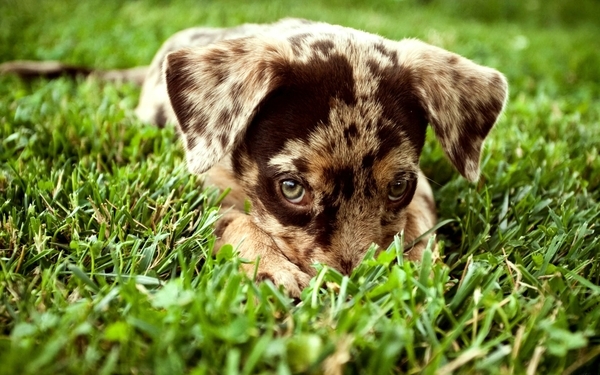
Vitamin D insufficiency is a major problem in cats and dogs in the United States. According to a 2015 study out of Tufts University1, 75% of dogs are vitamin D insufficient. We wanted to look at what that meant for real world pets.
The real problem in real world patients
VDI analyzed its database of thousands of patient results and found indeed most dogs and cats are VitD insufficient. Consistent with the Tufts study1 , over 75% of dogs and over 80% of cats are VitD insufficient. Median canine VitD is 69 ng/mL and median feline VitD is 60 ng/mL.
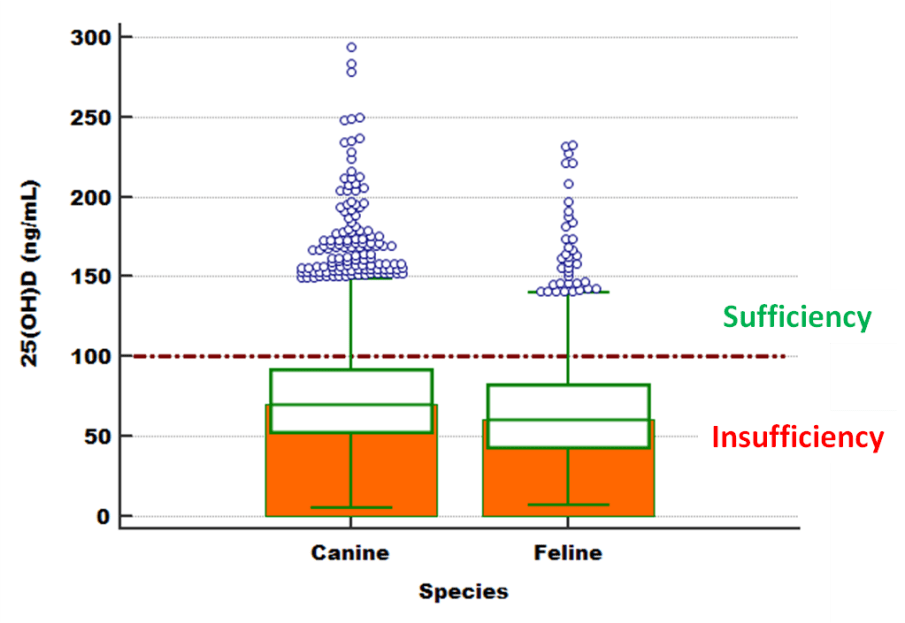
This is well below the sufficient range of 100-150 ng/mL which is demonstrated in the chart above. Now lets take a look at vitamin D status in various canine & feline breeds:
Top 10 Canine Breeds
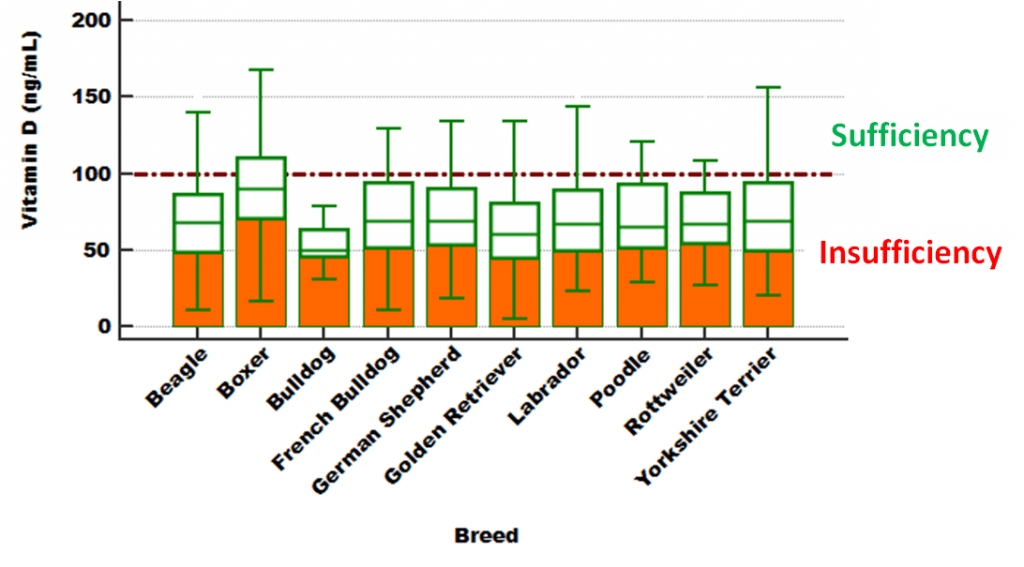
Top 10 Feline Breeds
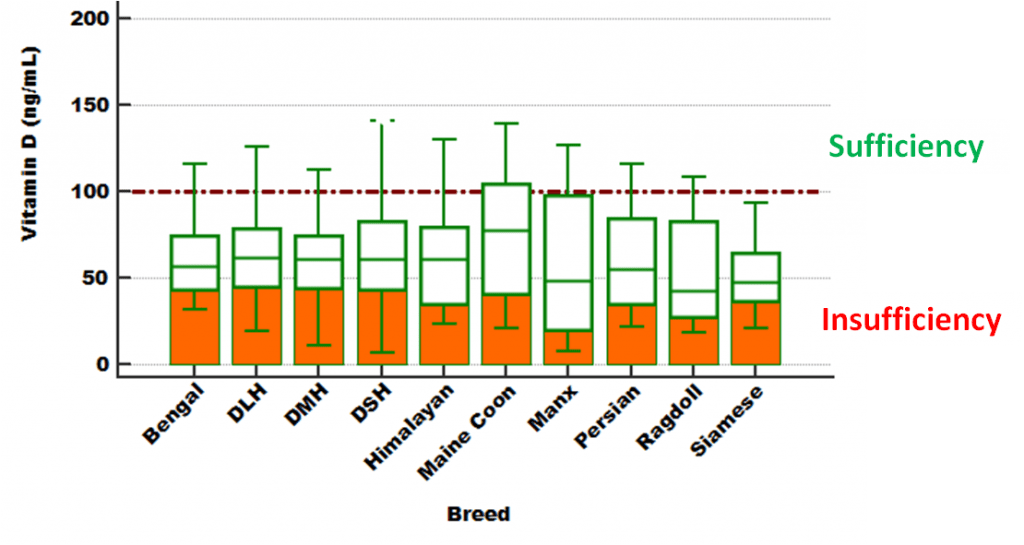
VDI found that all breeds of both cats and dogs are affected by low vitamin D levels. As you can see in the charts above, all breeds fell below the sufficiency line of 100 ng/mL. Now lets take a look at vitamin D status with respect to age:
Effect of Age on Vitamin D Status
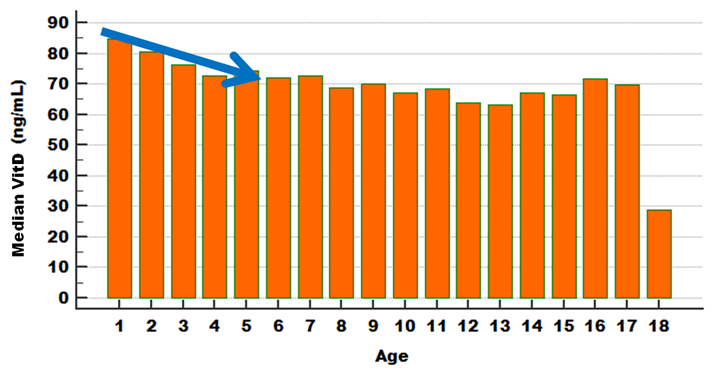
Older dogs will generally have a lower baseline VitD level than younger dogs, with the largest declines up to 5 years of age.
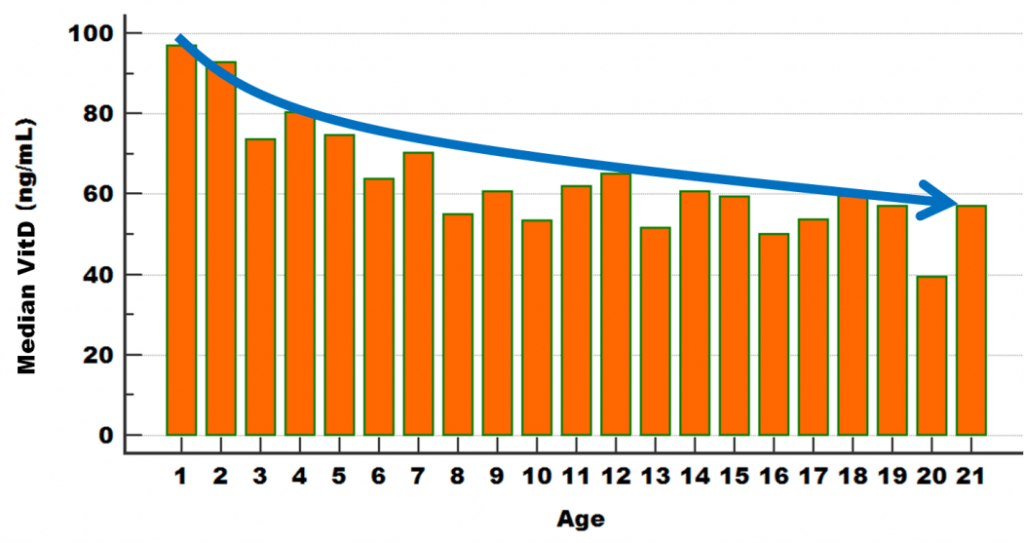
Older cats will have a lower baseline VitD level than younger cats declining throughout their lifetime.
VDI found that Vitamin D insufficiency advances with age. There is a significant decline in VitD status with increasing age in both cats and dogs. As they get older, the impact of sufficient Vitamin D levels increases.
References:
1) The effect of diet on serum 25-hydroxyvitamin D concentrations in dogs, Sharp C, et al, BMC Res Notes, 2015
